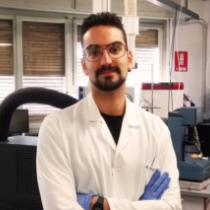Novel Cyclodextrin Based Systems for Drug Delivery and Related Issues
A special issue of Pharmaceutics (ISSN 1999-4923). This special issue belongs to the section "Drug Delivery and Controlled Release".
Deadline for manuscript submissions: closed (31 December 2021) | Viewed by 19141
Special Issue Editors
Interests: cyclodextrin modification and functionalization; cyclodextrin nanosponges preparation and applications; drug delivery systems; biopolymers; membrane technology
Special Issues, Collections and Topics in MDPI journals
Interests: molecular encapsulation; inclusion complexes; cyclodextrin; spectroscopic methods; bioactive compounds; enzymology; food science
Interests: cyclodextrins; polymer synthesis; dextrin polymers; drug delivery; encapsulation
Special Issues, Collections and Topics in MDPI journals
Interests: food biotechnology; molecular encapsulation; cyclodextrin; cyclodextrin-based materials; bioactive compounds; drug delivery; enzymology; molecular docking
Special Issues, Collections and Topics in MDPI journals
Special Issue Information
Dear Colleagues,
The correct drug delivery method can optimize a treatment to reduce adverse effects and the amount of drug necessary. In this respect, novel materials provide interesting opportunities offering an interesting alternative to conventional ones. Thanks to molecular encapsulation, which is the confinement of a guest molecule inside the cavity of a supramolecular host molecule, the particle might present positive properties, such as increasing the apparent solubility of the drug or bioactive compound, stability under abiotic (light, oxidants, etc.) or biotic (enzymatic degradation) conditions, control release of molecules, elimination of undesirable tastes, odours or metabolites, etc.
This Special Issue is about the current state-of-the-art of systems of cyclodextrin-based materials for drug delivery and related issues, providing a useful dissemination of the latest information. The Special Issue covers several aspects from synthesis, characterization, to application:
- Type of matrix, encapsulation mechanism, structure, functionalization, transport properties of encapsulated substrates, release, morphology, etc.
- Applications in different fields such as (targeted) drug delivery, medical practice, cosmetics, food, advanced materials, agriculture, decontamination processes, catalysis, packaging, etc.
Prof. Dr. Francesco Trotta
Prof. Dr. José Manuel López Nicolás
Dr. Fabrizio Caldera
Dr. Adrián Matencio
Guest Editors
Manuscript Submission Information
Manuscripts should be submitted online at www.mdpi.com by registering and logging in to this website. Once you are registered, click here to go to the submission form. Manuscripts can be submitted until the deadline. All submissions that pass pre-check are peer-reviewed. Accepted papers will be published continuously in the journal (as soon as accepted) and will be listed together on the special issue website. Research articles, review articles as well as short communications are invited. For planned papers, a title and short abstract (about 100 words) can be sent to the Editorial Office for announcement on this website.
Submitted manuscripts should not have been published previously, nor be under consideration for publication elsewhere (except conference proceedings papers). All manuscripts are thoroughly refereed through a single-blind peer-review process. A guide for authors and other relevant information for submission of manuscripts is available on the Instructions for Authors page. Pharmaceutics is an international peer-reviewed open access monthly journal published by MDPI.
Please visit the Instructions for Authors page before submitting a manuscript. The Article Processing Charge (APC) for publication in this open access journal is 2900 CHF (Swiss Francs). Submitted papers should be well formatted and use good English. Authors may use MDPI's English editing service prior to publication or during author revisions.
Keywords
- novel materials
- polymers
- cyclodextrin
- drug delivery
- structural characterization
- drug or bioactive compounds properties improvement
- application of nanomaterials in different fields









